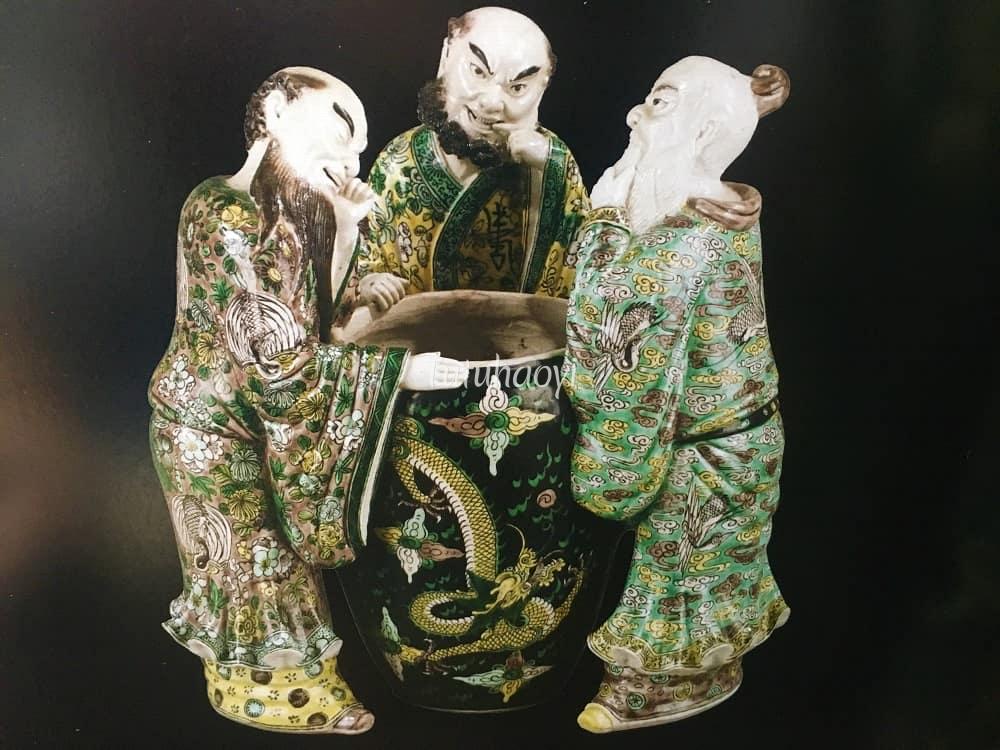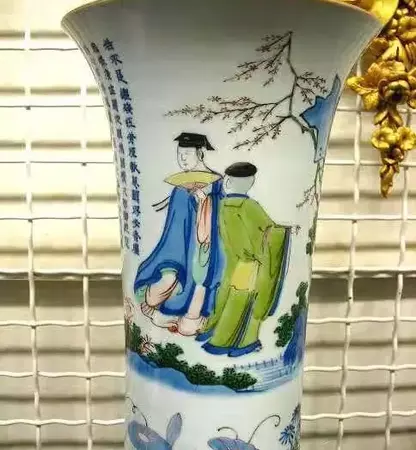There have been a few interesting discussions even guesses on a mysterious scene which depicts mainly three figures surrounding a large bowl. The story scene actually comes from an important anecdote in Song dynasty in China. Let Dr Yibin Ni explain to you with fascinating details.
image above: famille verte biscuit figural group, Qing dynasty (1644-1911)
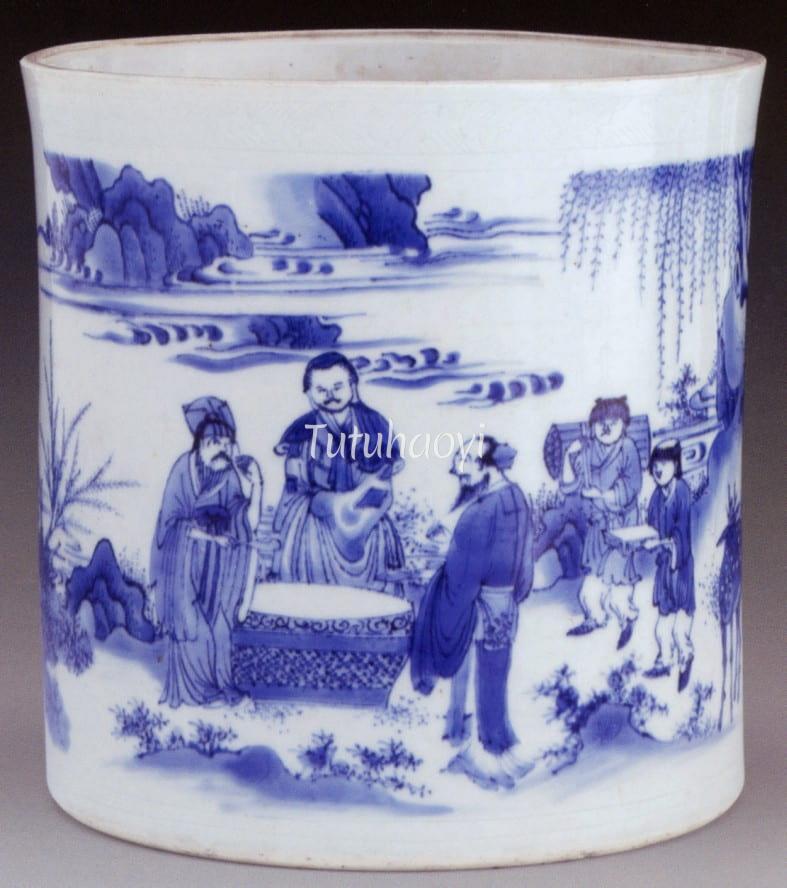
In the catalogue Seventeenth Century Jingdezhen Porcelain from the Shanghai Museum and the Butler Collections: Beauty’s Enchantment, Lu Minghua describes the scene on the Chongzhen blue-and-white brushpot as follows, ‘… three figures in a garden standing around a large bowl… the older man holds a gourd ladle, as if he were tasting wine. In the distance, mountains blend with water, clouds and wreaths of mist.’ And he finishes off with, ‘This is an idealised picture of the leisure pursuits of the literati in ancient China.’ (p. 100, plate 18) But is it really the case?
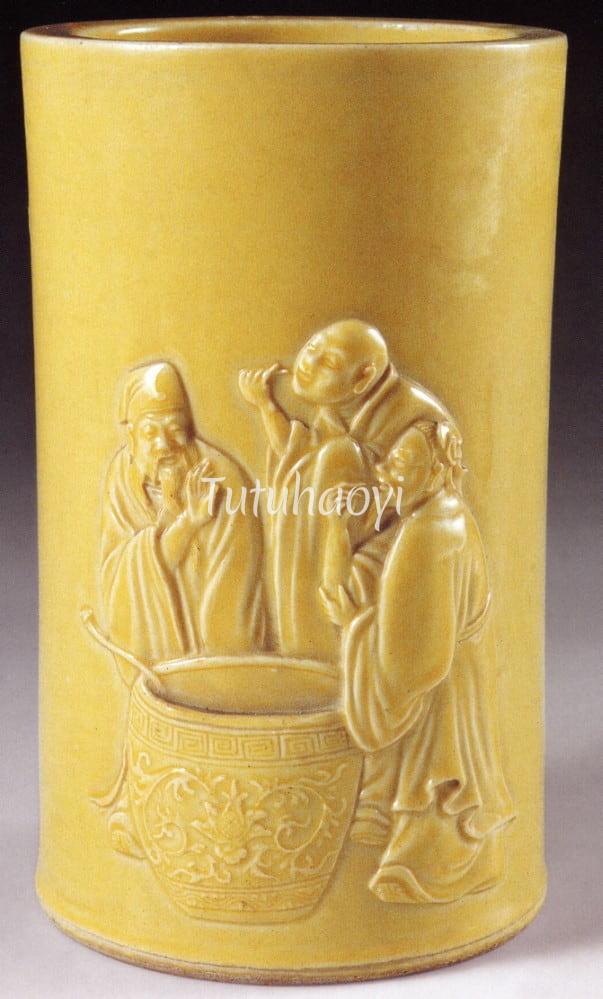
As a matter of fact, this scene depicts an important historical anecdote, which symbolises the advocated belief of the three great teachings of Confucianism, Daoism, and Buddhism harmonious as one (三教合一) in traditional China. In the scene on the brushpot, the person on the left is Su Shi (苏轼, 1037-1101), who wears his signature hat, known as ‘Dongpo Hat’, named after his art name Dongpo (东坡). The person on the left wears a bun on top of his head, favoured by Daoists, is Huang Tingjian (黄庭坚, 1045-1105), a poet and disciple of Su Dongpo. The person in the middle behind the large urn is Fo Yin (佛印, 1032-98), a Buddhist monk from Jinshan (金山, meaning ‘Golden Mountain’) Temple, who wears a characteristic garment that is made from patches of cloth. Su Shi is a pre-eminent personality in the Song court and an outstanding man of letters during the Song Dynasty (960-1279). There are many anecdotes about him passed down over generations, including his invention of a traditional Chinese dish – soy-sauce-braised pork, which was named after his art name as ‘Dongpo Pork (东坡肉)’.
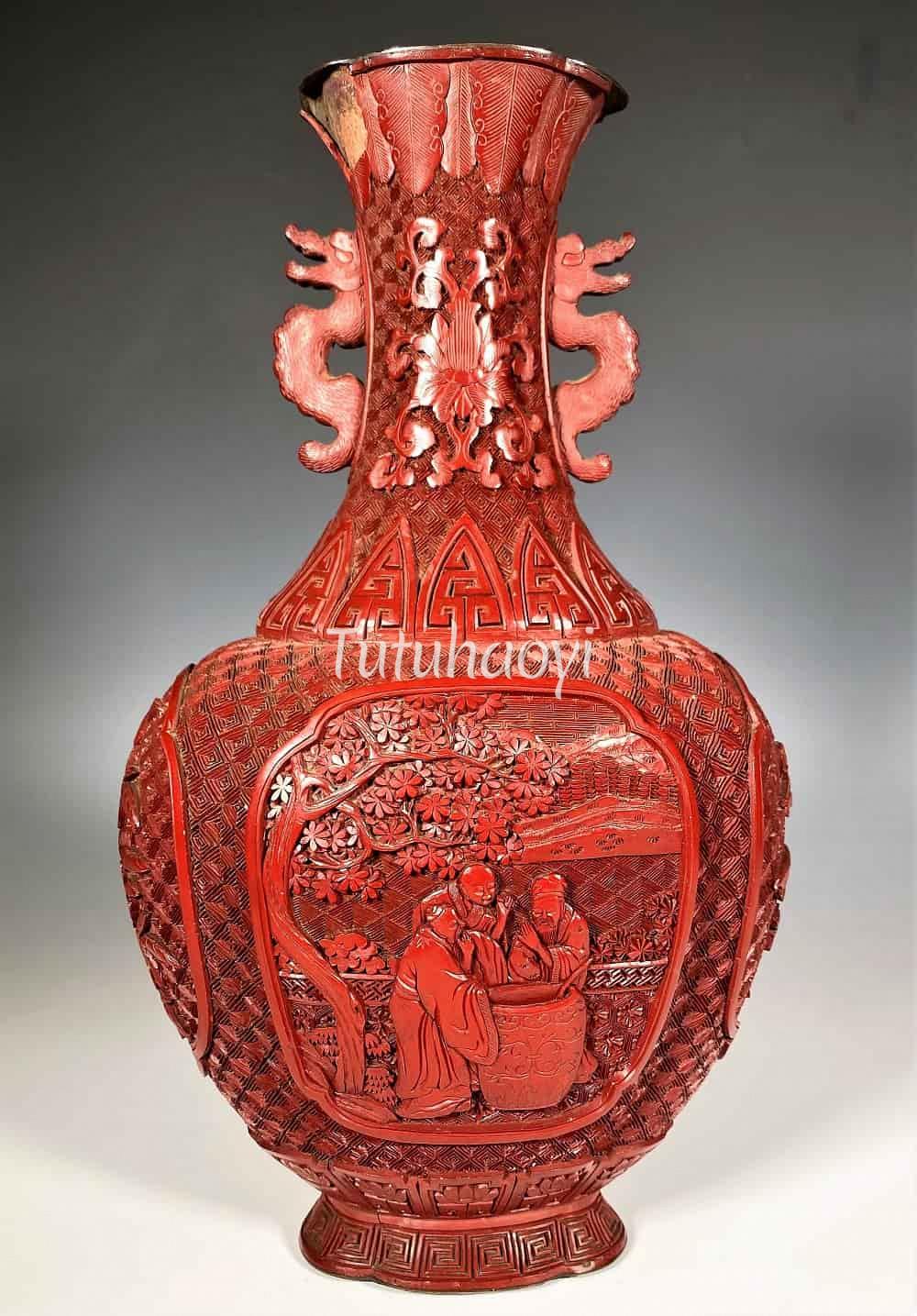

The Chinese name for the title of this scene is ‘San Suan Tu (三酸图)’, literally translated as ‘Picture of Three Sours’. One day during Su Shi’s exile in Huangzhou, Hubei province, his friend, Fo Yin invited him and Huang Tingjian to taste the ‘Peach-Blossom-Flavoured Vinegar’, made with a famous recipe inherited from the Tang dynasty (618-907). Su Shi, Huang Tingjian, and Fo Yin gathered around the vinegar pot and all scooped a sample and had a taste of it. Since the vinegar was exceptionally potent and sour, the three gentlemen all pulled a funny face as a result of a surprising experience.
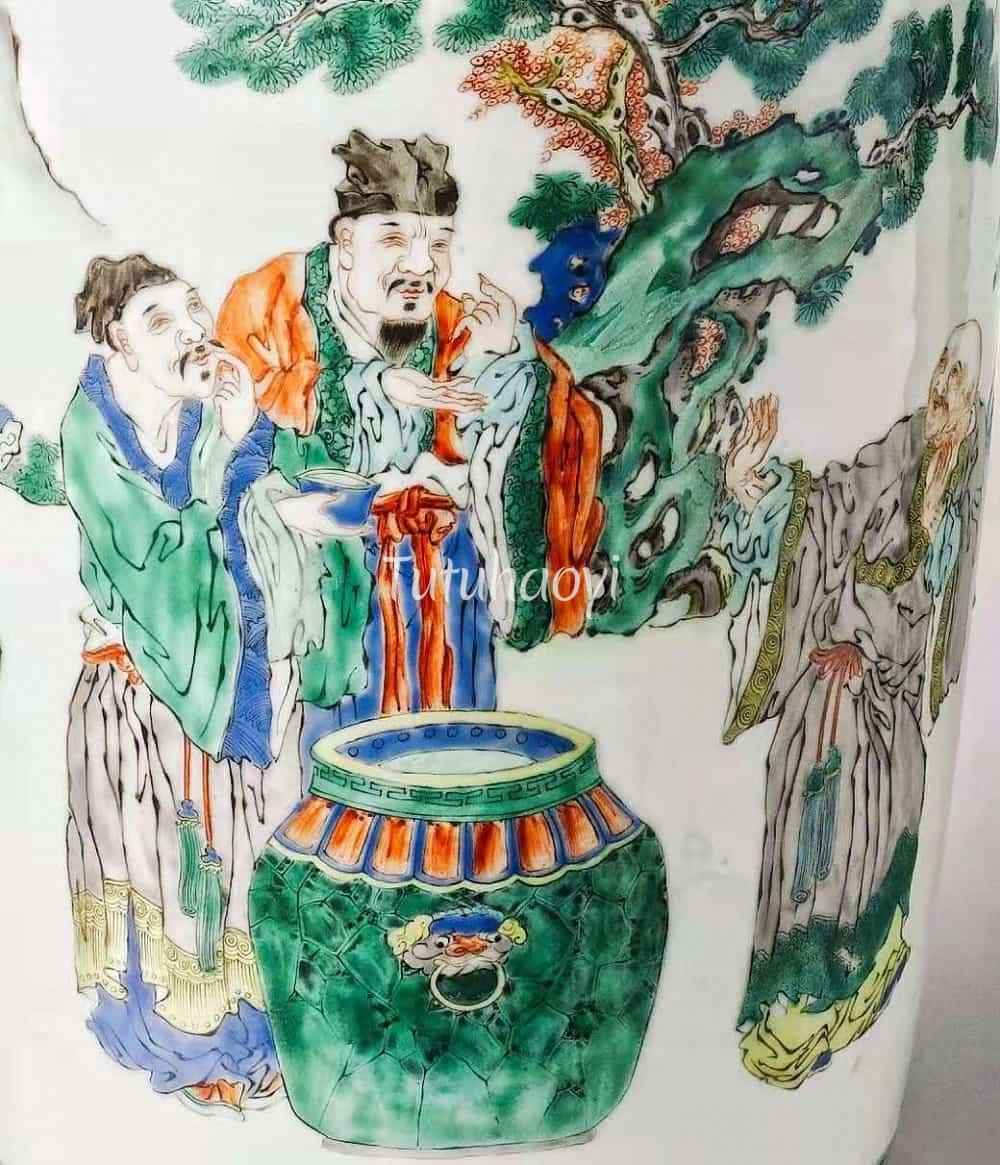

This face-pulling has been expressed pictorially in either a subtle or a more direct way, due to artists’ choices, their ability, and the means they had access to. On the Chongzhen blue-and-white brushpot, the expressions on their faces are muted, while the three gentlemen’s agony is palpable on the scroll painting of the same theme rendered by the Qing-dynasty Cantonese painter Su Liupeng (苏六朋).
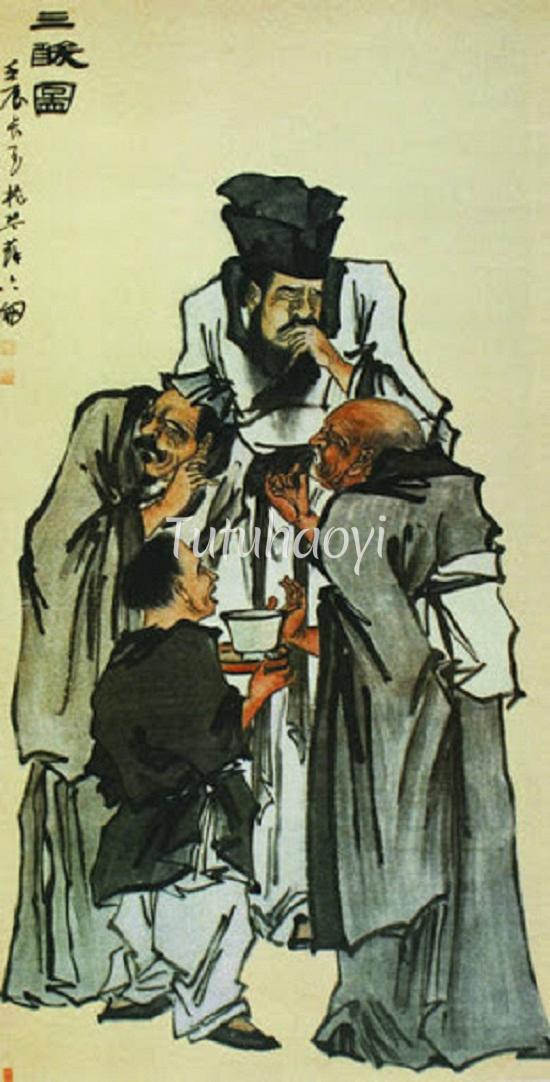
The findings and opinions in this research article are written by Dr Yibin Ni.
